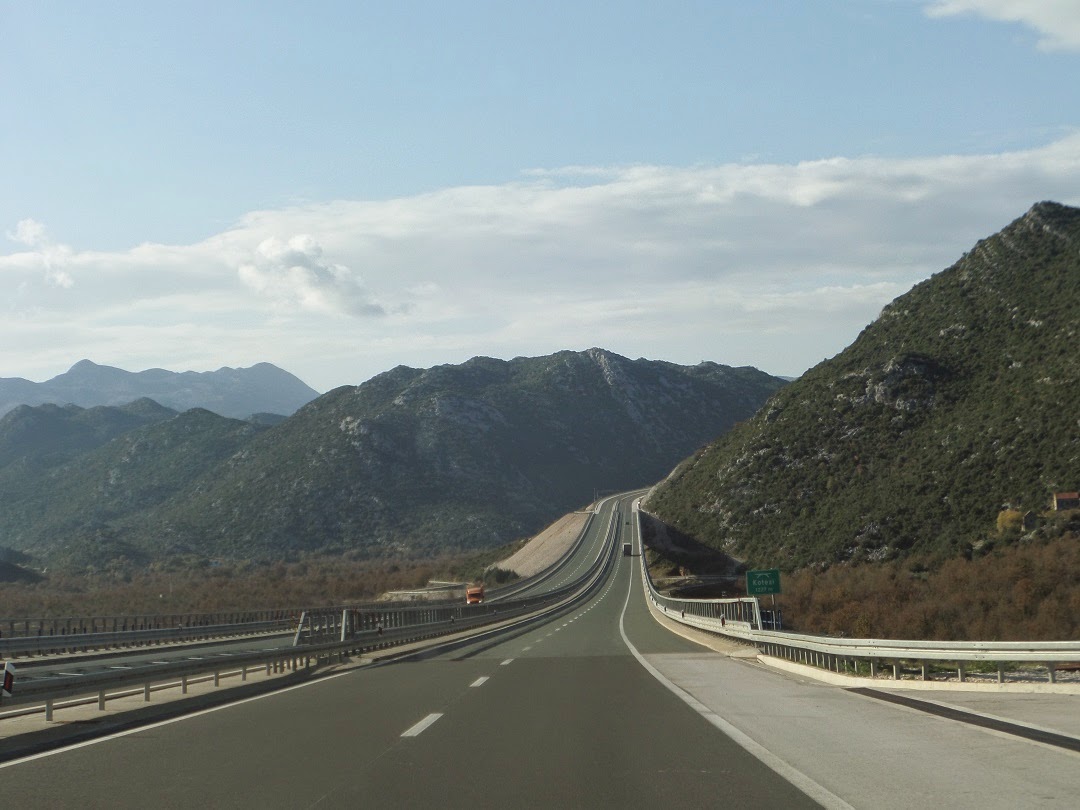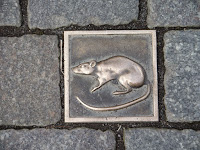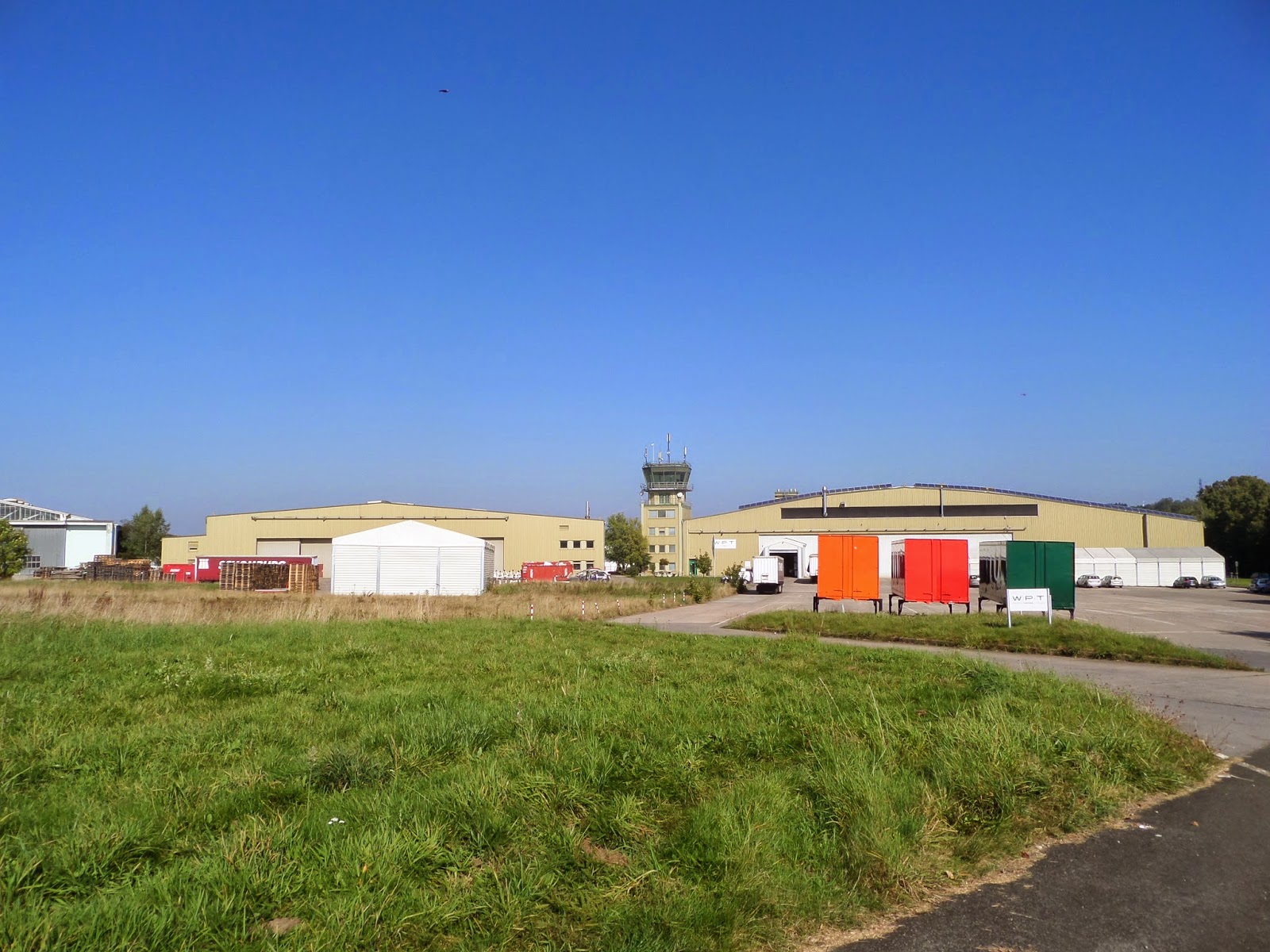The time finally arrived when we have to leave the Adriatic and Croatia and head "home" – home being where Kate, Paul and Amelia live, rather than our home which is currently the caravan which is with us wherever we might be!
There has been a change in the weather this week, with some heavy rain and thunder and lightning, particularly at night. It's quite frightening within the thin walls of a caravan. Not only can you hear it louder, but you can physically feel it!
But we had one day when the weather was really good, and we sat outside and had a very enjoyable lunch in the sun in Split. Typically the day we planned to leave was forecast to be sunny all day, with temperatures rising to 20 degrees by midday. Never mind, I was thinking it would be better to have a long drive in good weather, although as it happened this didn't last as long as I had hoped, once we headed inland.
Having set the alarm (for 6) which doesn't happen very often nowadays, I didn't feel I slept much until the alarm started when it was difficult to wake up! We left the site at 8 and joined the morning traffic. The first 20 minutes was on a slow road and involved driving a route which climbed from sea level to about 1000 feet, and joined the A1 motorway. This toll road runs parallel to the coast, some 10 miles inland, for 80 miles northwest from where we joined it, before turning towards Zagreb, the capital of Croatia.
As forecast, between the mountains and the coast the sky was completely clear of any cloud for the first few hours, and with the road so quiet in both directions it was a very enjoyable start to the day, and we were able to enjoy the scenery of rolling, green hills, and very few buildings of any sort.

The A1 motorway near the coast at this time of year is very quiet, but I doubt it would be the same in the height of summer.
 |
| If you see a
|
We had seen a service area overlooking a lake on the journey south to Split, and had decided to stop on the way back for a look.

This has to be one of the most scenic stops on any motorway we have ever driven on.

The views are amazing.
The service area has clearly been designed to allow travelers to appreciate it. With a planned 8 hour drive, a 30 minute stop so early in the day was a bit of a delay but well worth it.
I've found out since that it's not a lake but the Krka Ria, created by the submergence of the riverbed after the rise of the Adriatic sea level after the last ice age.
Just before the A1 turns inland, it descends back down to just above sea level near Zadar, and the exit to Pag Island where we had stayed a few weeks before, with the start of a very steep climb, from just above sea level to 2000 feet in 14 miles and 15 minutes at our towing speed. This was via two long sweeping hairpin bends and a series of tunnels, the last of which was 3.6 miles long.
The motorway there was steeper than any motorway we had driven on with the caravan in Austria, where the climbs are over much longer distances, even at the highest point of 5000 feet.
The other remarkable thing about the tunnel on the Croatian A1 was that we went into it with blue skies and an outside temperature of 17 centigrade, and came out of it into thick fog with a temperature of 4 centigrade. In fact the frost warning on the car "dinged" and within 10 miles we had passed a truck salting the road.
The fog and cold stayed with us for most of the day in varying thickness, although later on we did drive through another long tunnel where at the end the temperature had risen to 12 centigrade, but this "warmth" lasted less than an hour. I guess this is because the motorway continues at a highish level to Zagreb, and onwards towards Slovenia and Austria.
The fog was disappointing as we obviously couldn't see much after the first few hours. It was nearly dark by 4, as we approached our destination of Dovje near the border between Austria and Slovenia, but suddenly the fog disappeared and the sky was clear, allowing the last 20 minutes of the journey to be completed with views of snow-capped mountains.
It is many years since we have had any car journey that long in one day, and we always knew that this would be the longest drive with the caravan we had ever done at 603 kilometres – 375 miles – taking 9 hours. It was not to race back to the UK, but at this time of year there are not many sites open. There is a clear advantage for our friends and family with motor homes who can pull into service stations and rest up. Not quite so easy with a caravan. But with roads so quiet in Croatia and Slovenia it was a really enjoyable drive.
But having got that journey out of the way we are now nearly a third of the way to Calais, with 4 more planned stops of at least 2 nights, and the longest day just 260 miles. It's been a great trip but we are now homeward bound.

.JPG)
.JPG)



.JPG)



















.JPG)
.JPG)



.JPG)
.JPG)








